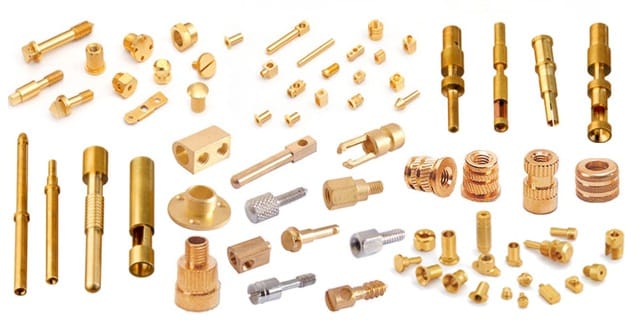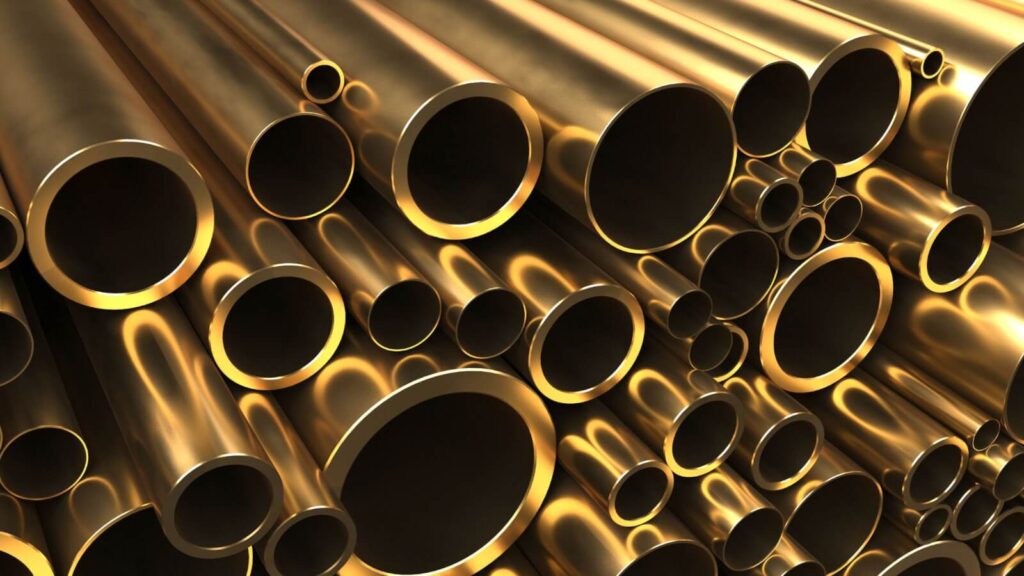Since the dawn of early civilizations and up to today’s modern world, brass has been a popular choice when looking for a strong manufacturing material. However, what makes brass stand out is more than just its durability. So, what exactly is brass? And how has it been combining both beauty with practicality since around 5000 BCE?
What is Brass?
If you combine copper and zinc, the metallic element that will come out is what’s known as Brass. Change different percentages of the copper and zinc and that will result in the different types and variations of brass. While some types of brass can occasionally feature additional elements (such as lead and arsenic), copper and zinc are always the heart of brass and to which it owes most of its characteristics.
What are the different types and variations of brass?
There are multiple ways to group and classify different kinds of brass, but brass is most commonly categorized by the percentage of zinc and copper in it. Changing the amount of copper and zinc found in the brass makes every type of brass have its own set of characteristics. The following are the most common types of brass used in manufacturing:
Alpha Brasses
Contents: less than 37% zinc
Characteristics: This type is an artist’s favorite as it stands out with its great flexibility that can help a crafter explore his creativity with ease. It’s mostly used for decoration and aesthetic purposes.
Alpha-Beta Brasses (CuZn40)
Contents: more than 37% zinc
Characteristics: While the alpha stands out for its malleability, the alpha-beta brass is known for its strength. It’s typically featured in hardware and demanding machinery that needs a certain level of durability.
High-Zinc Beta Brass (CuZn15)
Contents: Around 85% zinc and 15% copper
Characteristics: Less copper and more zinc means that this type is more budget-friendly than other types of brass, while simultaneously offering the benefits of this metallic alloy.
Naval Brass (CuZn40Sn1)
Contents: An added 1% tin to 39% zinc and the remaining part is copper
Characteristics: Thanks to the tin, this type of brass is resistant to wear and dezincification, a feature that makes it able to withstand marine environments and be featured in ship parts and marine hardware.
Yellow Brass (CuZn33)
Contents: 67% copper and 33% zinc
Characteristics: With a bright vibrant yellow color, this type of brass is more than meets the eye. Despite it being a popular choice for aesthetic purposes, it also offers a high level of corrosion resistance that comes in handy with different applications.
Red Brass (CuZn15)
Contents: 15% zinc, more than 80% copper, and traces of iron, lead, and tin
Characteristics: A reddish hue due to the high percentage of copper. It’s also referred to as gunmetal.
What Are the Properties of Brass?
A low level of friction
This means that when it comes to manufacturing gears and bearings, brass is one of the materials that can glide smoothly without wear and tear
An aesthetic finish
Whatever your taste is, brass will find a way to complement it with the ability to go from a polished luster look to a more worn, vintage finish.
The ability to resist corrosion
Brass is appropriate for outdoor and marine settings due to its resistance to corrosion and tarnishing, including seawater-induced galvanic corrosion.
A high level of flexibility
Compared to bronze or zinc, brass is particularly malleable which is a major advantage when choosing the proper manufacturing material
Acoustic capabilities
Brass is a popular material for musical instruments such as saxophones and trumpets because of its outstanding acoustic capabilities.
What Are the Advantages of Brass?
Brass can be tailored into many shapes, forms, and finishes
Not only is brass more budget-friendly than other manufacturing materials such as steel and aluminum, but it’s also more moldable. Because of its increased flexibility, machining operations like bending and turning are easier and it also offers a wide choice of finishes from dazzling gold to matte black.
There is less fuss with the upkeep of brass
The maintenance of brass is an occasional polish now and then, thanks to its remarkable resistance to corrosion. This clears a lot of headspace for manufacturers and customers who choose brass for their projects, especially the ones outdoors and exposed to harsh environments.
Brass is an antibacterial manufacturing material
Thanks to the copper in brass, it’s one of the few manufacturing materials with inherent antibacterial properties. When sanitation is a top priority, such as in water filtration systems, this quality comes in handy.
Brass is a long-lasting manufacturing material
Brass is resistant to rust and corrosion, unlike plated steel and aluminum. Because of its endurance, you won’t have to worry about constantly replacing the unit, which will ultimately save you big bucks over time.
What Are the Disadvantages of Brass?
Tarnishing and Oxidation
If brass is not properly maintained, oxidation can cause a blackish tarnish to appear, especially in areas with high humidity. However, this can be easily avoided by covering the brass with a clear lacquer and regular polishing.
Allergic reactions
It’s not uncommon for some to have an allergic skin reaction to brass, especially those with a sensitive skin type or pre-existing skin conditions. Again, this is a minor problem that can be solved with a layer of clear lacquer.
Not always budget-friendly
Copper is expensive and unfortunately, a fair percentage of brass is made of copper. However, due to its low maintenance requirements, in the long run, brass could end up saving you money.
What Are the Applications of Brass?

The toughness and malleability of the brass alloy have made it useful for thousands of years and it has found its way into so many different applications and a variety of purposes. Here are a few of the ways brass is used today:
- Because of its acoustic qualities and workability, brass is frequently used in manufacturing instruments like trumpets and saxophones.
- With its resistance to corrosion and anti-bacterial qualities, brass is popularly utilized for plumbing pieces like pipes, valves, and fittings.
- Brass is a perfect material for gears, bearings, and other moving parts because of its low friction characteristics.
- Brass is a good choice for electrical connectors and switches due to its strong conductivity and resistance to corrosion.
- Brass is commonly used for decorations, light fixtures, and door handles due to its warm, golden look.
FAQ
Is brass safe to use?
Brass is an inert, non-toxic metal that is suitable for most engineering purposes but should be avoided when in contact with acidic foods. In certain instances, it may also cause an allergic reaction in those with sensitive skin. Nevertheless, using it as a manufacturing material is generally safe.
What is the Difference Between Copper, Brass, and Bronze?
While It’s usual to refer to all three as “red metals”, each stands out with its qualities. Both bronze and brass are primarily composed of copper. However, Tin is usually the secondary element in bronze, whereas zinc is the primary secondary element in brass.
While brass stands out with its exceptional low-friction properties, bronze is especially resistant to corrosion from seawater, and copper, on the other hand, is the ideal choice for electrical applications.




